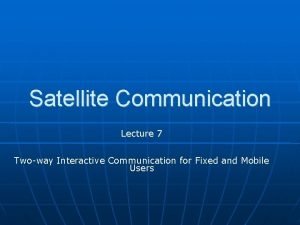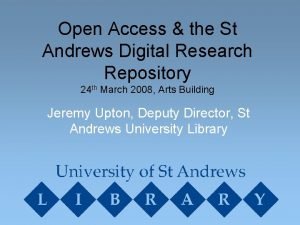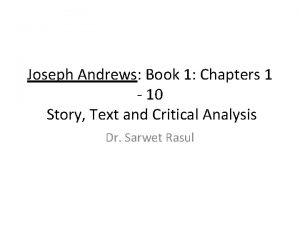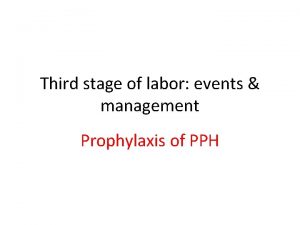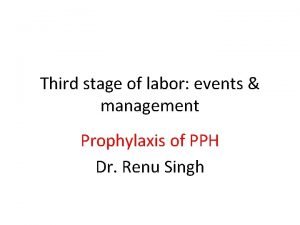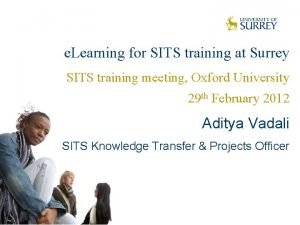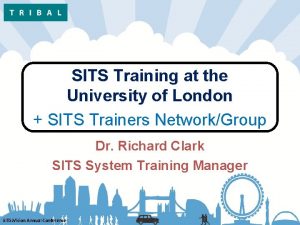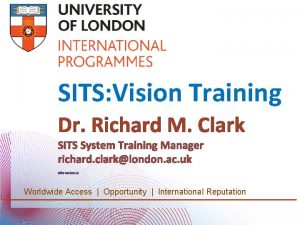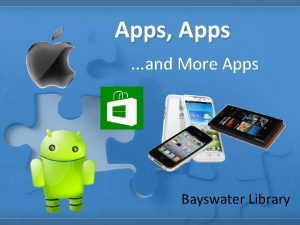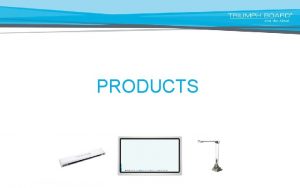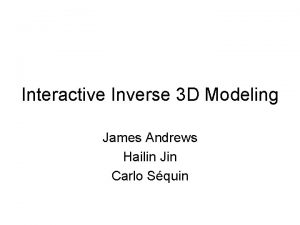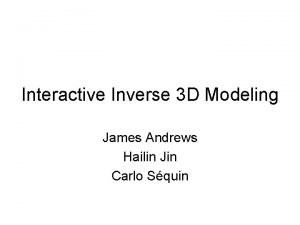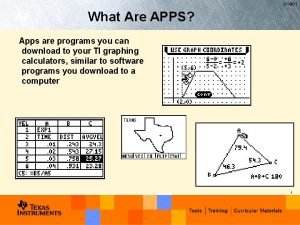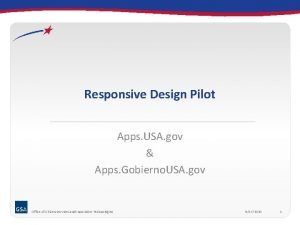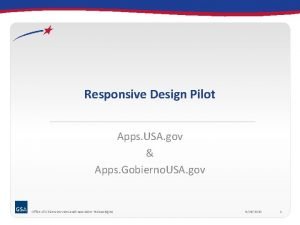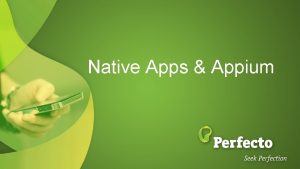SITS Interactive Apps at St Andrews Two key




















- Slides: 20


SITS Interactive Apps at St Andrews • Two key applications that interact with SITS: – MMS: institutional data flow management tool suite – Admissions: does what it says on the tin • As of Jan 2013 MMS is read/write via DB • Admissions is read via DB, write-back using Stu. Talk

MMS • MMS is primarily designed to minimise manual handling of data • Extracts data from SITS over database links, including: – Courses, course enrolment – Degree intention, supervisors (PGR) – Course results for degree classification – Exceptional circumstances – Disability information

MMS (2) • Data written back semi-automatically • CSV files generated for end-of-course results • Imported in batch operations through SITS client • As of Jan 2013, work partially completed for writing back automatically as XML feeds

MMS (Students on Module)

Admissions • Reads SITS data directly from database – Performance issues performing mass-reads over Stu. Talk • Reads SITS data for update over Stu. Talk • Writes decisions back via Stu. Talk web services • Student details, applications, etc. written back via Stu. Talk XML

Admissions (Applicant Import)

Feedback • Very positive response to user interfaces – Substantially simpler to adopt institutional look and feel – SITS-specific detail generally hidden from user • Issues with performance • Issues with reliability • Hiding implementation detail can cause confusion

Stu. Talk Web Services v 8. 5. 1 • SOAP based • Ability to run processes – Assign new student ID – Generate reports – Etc. • Immediate feedback on success/failure – Useful for development – Well suited to small interactive tasks – Can report outcome directly to user

Stu. Talk Web Services (2) • Poorly designed – JSON in SOAP • XML in JSON in SOAP! – Base 64 in XML in JSON in SOAP!? App Engine Datastore – No use of standard authentication tools – No transaction safety • Slow (200 -500 ms/request) • Limited support for writing multiple records – Embedded XML feeds

Stu. Talk Web Services Request <soapenv: Body> <urn: ACTION> <urn: USER>stutalk</urn: USER> <urn: PASSWORD>topsecret</urn: PASSWORD> <urn: DELIMITER>JSON</urn: DELIMITER> <urn: FUNCTION>DMU</urn: FUNCTION> <urn: PARAMETERS>{"ACTION": "UPDATE", "DCT": "SRS", "ENT": "CAP"}</urn: PARAMETERS> App Engine Datastore <urn: INDATA> { "cap_stuc": "120004054", "cap_apfs": "01", "cap_seqn": "01", "cap_blok": "24", "cap_qstc": "NQ", } </urn: INDATA> <urn: MD 5>b 447291 e 73 dc 268 a 717 e 276 c 2 e 96 da 0 b</urn: MD 5> </urn: ACTION> </soapenv: Body>

Stu. Talk XML • • Intended for bulk data import/export Appear more robust for simple data sets Some issues with mixed data sets Writing back inter-related data sets has issues with primary key generation – For example CAP, APF and STU for a new student application • Require shared space for storing XML files

Stu. Talk XML Example <EXCHANGE> <stu. ins> <stu_code>01234567890</stu_code> <stu_had 1>1 Made Up Street</stu_had 1> App Engine Datastore <stu_had 2>Edinburgh</stu_had 2> <stu_hapc>EH 1 2 AA</stu_hapc> <stu_haem>student@example. org</stu_haem> </stu. ins> </stu> </EXCHANGE>

Reading by Database • Fast – Especially joining tables • Risk of issues due to schema changes • Non-database fields cannot be accessed – Unaware of any times this was an actual problem

Writing by Database • Fast, however: – No SITS triggers – No integrity constraints – No feedback • Cannot run processes – For example student ID assignment • Usable only in very simple use-cases

Stu. Talk Interaction Layer • Developed in-house at St Andrews • Web service & XML wrapping layer • Hides implementation details – Allows easy re-targeting of SOAP & XML interfaces • Simple object-mapping layer – Data object definitions automatically generated from SITS ENT & FLD records

Summary • • In theory, good In practice, some significant challenges Likely to be worth persevering with Upcoming changes/improvements to Stu. Talk? – “Beta” API in 8. 5. 1

Suggestions • Stu. Talk XML feed into EUGEX • Staging database for changes to go to SITS • Work with Tribal on API to improve key issues: – Lack of transaction support – Performance (session instantiation? ) – Read/write related records as a batch

Questions?

 Consumer apps vs enterprise apps
Consumer apps vs enterprise apps Arena stage advantages and disadvantages
Arena stage advantages and disadvantages Stage left and right
Stage left and right Diagram proscenium stage
Diagram proscenium stage Customer relationship of business model canvas
Customer relationship of business model canvas Contoh bisnis model canvas makanan pdf
Contoh bisnis model canvas makanan pdf Two way interactive communication
Two way interactive communication St andrews sustainable development
St andrews sustainable development St andrews and st brides high school
St andrews and st brides high school Chris andrews northwestern mutual
Chris andrews northwestern mutual Llaves de la oclusion de andrews
Llaves de la oclusion de andrews St andrews research repository
St andrews research repository Izotermele andrews
Izotermele andrews Joseph andrews chapter wise summary pdf
Joseph andrews chapter wise summary pdf Lowell lee andrews
Lowell lee andrews Separador jackson
Separador jackson Manobra de brandt-andrews
Manobra de brandt-andrews Stance markers
Stance markers Anna easter brown
Anna easter brown Brandt andrews method
Brandt andrews method Amtsl
Amtsl






